Most Americans had all but forgotten both Alfa Romeo and Maserati at the turn of the 20th century. The last really popular Alfa Romeo (by Italian-car standards) had been the Milano, but sales of the brand as a whole were typically under 5,000 per year across the country. Sales in the 1990s fell to under a thousand per year in 1994. Maserati was also not a large seller, but people knew the name from a few supercars and, in many cases, from the Joe Walsh song “Life has been good to me” which notes that his Maserati goes 185, he lost his license, now he doesn’t drive.
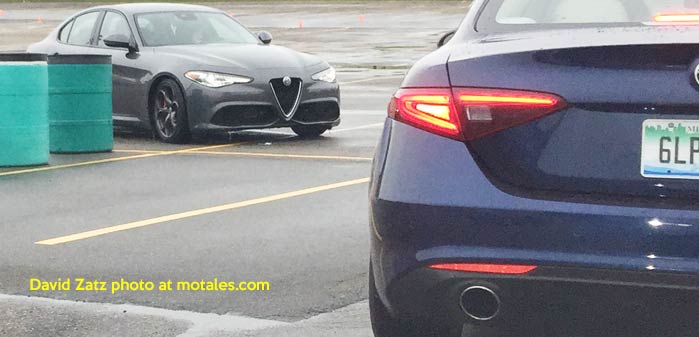
When Fiat took over Chrysler, that was not their only goal; they also wanted to bring back Alfa Romeo and reinvigorate Maserati. How would they distinguish two new Italian brands? One way was by producing almost completely opposite vehicles at first—the Alfa Romeo 4C, a light, tight sports car, and the Maserati Quattroporte—a car which was largely based on the Chrysler 300C, but vastly improved. It was followed by the somewhat similar in attitude Ghibli and Levante later on, while Alfa Romeo with the Giulia sedan and Stelvio crossover.
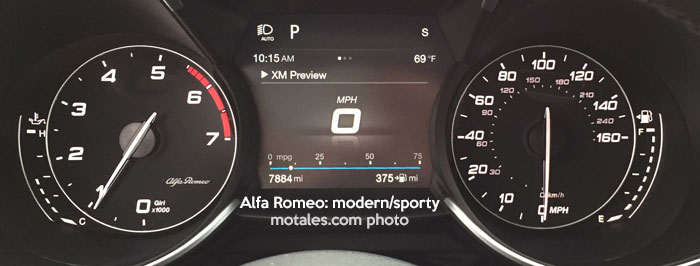
The difference between Alfa Romeo and Maserati was extremely clear in the first 30 seconds of test drives. The 4C and Giulia had a true small-car feel, with tight handling and steering, providing instant responses to any input. These are cars you have to pay attention to all the time you drive them, but which react completely and instantly. The Maseratis, on the other hand, stuck to their touring car heritage; they would be terrific highway cruisers. They have a lighter but somewhat tighter steering feel than the Chrysler 300C, but have a more luxurious ride and more power than the 5.7 or 3.6 cars.
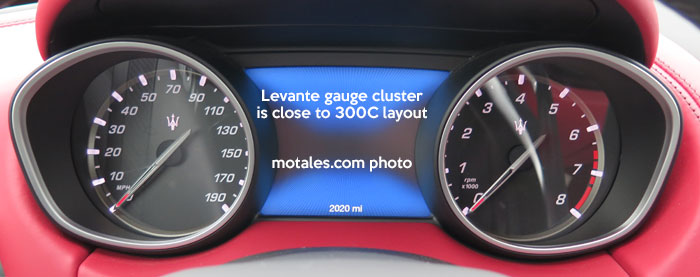
For a relatively untrained driver, the big, comfortable Maserati, with its rapid-onset power, was easeir to drive than the smaller, more track-oriented Alfa Romeo. Its luxury setup was easier to handle than the sensitive Alfas. Both were light on their feet and precise in their steering, and you can record good track times in the big Quattroporte or even the Levante.
The Alfa Romeo Giulia was even more precise and less forgiving, but letting off the gas pedal (just like in a Hellcat) instantly righted things. It is more of a true driver’s car and less of a family car. The Quattroporte is as tame as you want it to be, but handles well when pushed; the Giulia seems to want to be pushed. It feels alert and ready at all times — in terms of handling, at least — but light on its feet, inviting the fastest turns you can handle.
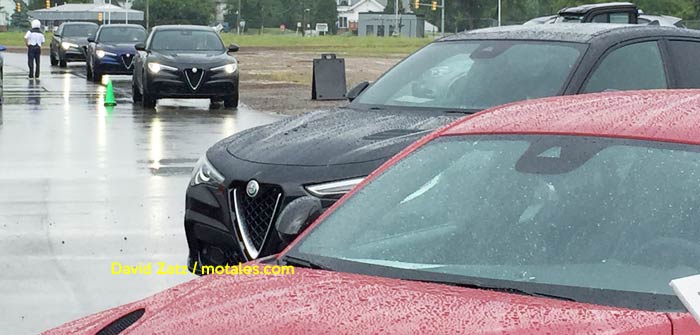
The Alfa Romeo makes a good city/suburb car for short, fun trips, while the Maserati is the ideal highway car, still good in suburbs and the city, but more comfortable, easier to drive, and smoother. This is all consistent with the Alfa/Maserati small/big car history, though arguably Maserati has played in both arenas. The Alfa 4C was an incredibly extreme version of the Giulia in character—like a tough, powerful skateboard.
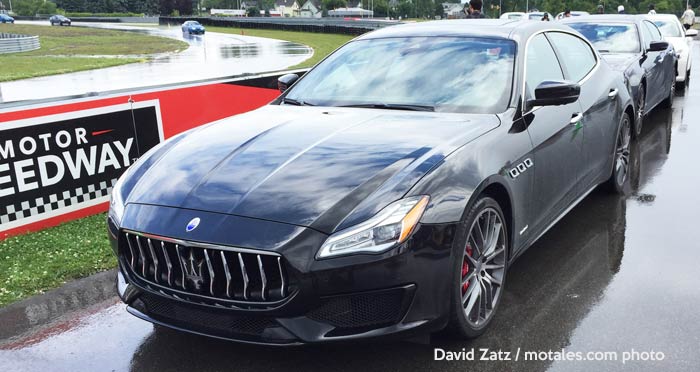
Maserati may have based their Ghibli and Quattroporte on the 300C, but they made many changes, including a different front suspension architecture, higher-spec Ferrari-made V6 engine, and a nicer interior. The result is a car that feels lighter and is more capable on turns. It is what many hoped the 300C would become in time, before the Giorgio platform sucked up the company’s resources and attention.
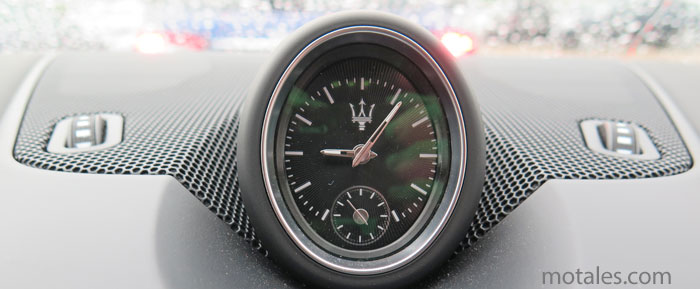
Alfa Romeo meant to take BMW’s crown as the ultimate driving machine, and to a large degree it did, but it turns out most people don’t want an ultimate driving machine. BMW likely makes far more sales to people looking for its brand cachet than those attracted by its fine cornering. Alfa Romeo may have leaned a bit too much on suspension legerdomain—the Stelvio certainly dialed it back a bit from the Giulia.
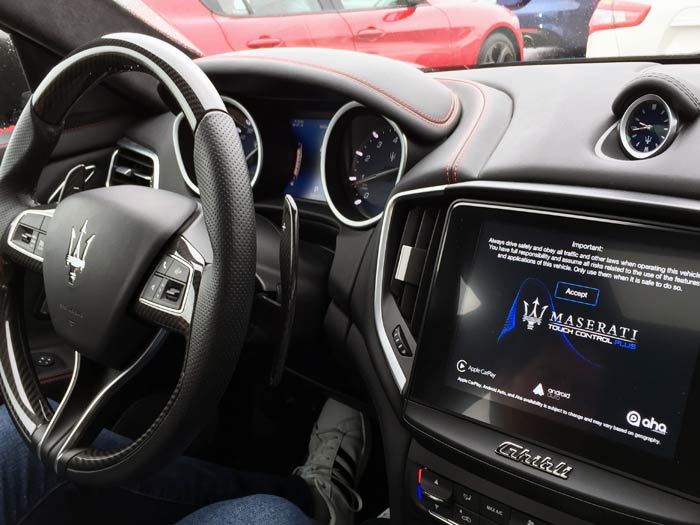
That was the Alfa-Maserati dichotomy when the 21st-century Giulia and Stelvio and Ghibli were all new Italian cars. Today, Alfa Romeo barely exists in North America at all; and Maserati is selling well, for Maserati, but it has not quite displaced Mercedes at the top end of the scale. What the next decade brings is an open question, but both cars are still sold in the United States. It does appear that Maserati will get more resources; between the song and its attractiveness to a wider range of drivers, Maserati has proven itself to be durable and profitable. Alfa Romeo chose a tougher road and its future in North America may or may not follow its past.
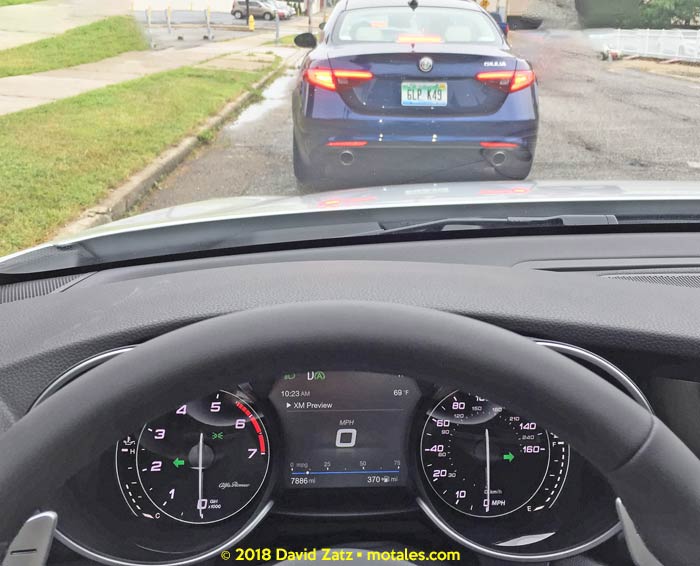
See how Jeep, Dodge, Ram, Chrysler do on new quality-vs-cost chart
Italy slaps Elkanns’ wrists in tax case
Copyright © 2021-2025 Zatz LLC • Chrysler / Mopar car stories and history.
YouTube • Editorial Guidelines • Videos
Tailfins Archive • MoTales on BlueSky